I previously discussed that there are different types of emergency preparing. There is acute emergency preparing (e.g. needing to leave the home without much notice, like an emergency hospital stay). There is also collecting emergency supplies (food, medical, home and car). Last, there is learning how to produce your own supplies so that you are not reliant on a collection that is constantly diminishing, but have a set system that helps you produce a great deal of your own food and other home supplies. Today I’m focusing on the collection of emergency food supplies.
This is a great step toward being prepared. It helps you to start thinking about what you need on a weekly and monthly basis.
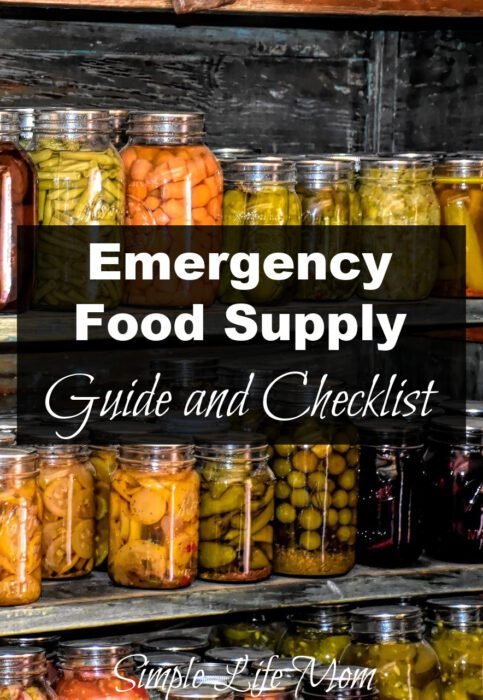
I recognize that this isn’t the most ideal method. It’s very short term. After all, what happens when that small supply is gone? Ideally, you want to move toward being able to produce your own needs and cut down on your dependency.
That being said, many people (most these days) are not at a point in their life with knowledge, time, and resources to be fully self sufficient. I totally get that and want to get you started with at least an emergency supply. After all, even those who produce their own supplies also purchase, trade, and stock up in times of trouble!
Community
Joining together with those who are like-minded is the first step. You may be surprised at who around you is also wanting to build an emergency supply. These are your de-stressing friends who provide support and resources.
If you can’t raise chickens where you live because of community laws, do you know someone who does? Can you partner with them? Often times you can trade eggs for something you can provide.
If you don’t know how to garden, do you know someone who does to whom you can ask questions? You can read about gardening, but someone who is actively gardening in your zone and is used to the local weather patterns can be a wonderful resource!
Who’s a local farmer who raises and processes beef or pork organically that you can connect with and use as a resource?
Make connections now, because when disaster hits they are often swamped and may not be able to help you. I’ve told the story that when 2020 hit, I had already made my cow order to my local supplier. Before he delivered to me, he was swamped with small orders. His secretary originally told me she couldn’t fill my order, but was going to give me a few small items. The owner later called me back saying he didn’t want to do that to me and wanted to go ahead and give me my large order. I came up with the idea for him to supply my order over many weeks instead of wiping him out all at once. That worked perfectly. I literally only got a huge amount of beef because I had already established a relationship with his company. I was very happy that we had made that connection, because at the time there was no beef in the stores in my area for many weeks.
So, look in local social media groups, ask friends, and find out where you can buy local food. A HUGE resource!
Gather Supplies for 3 Months
3 months of supplies is a common emergency supply time frame due to seasons. We cook different types of food in Summer vs Fall, Winter, or Spring. It’s also a nice chunk of time that gives you time to stay at home or make other plans if needed.
If 3 months seems overwhelming, start with 3 weeks. I know people who go to the grocery store every single day. Going from every day to once a week may be a huge step. If this is you, start with one week and then work your way up! Don’t try to do something that is unrealistic for your family. Start with something that you will stick with.
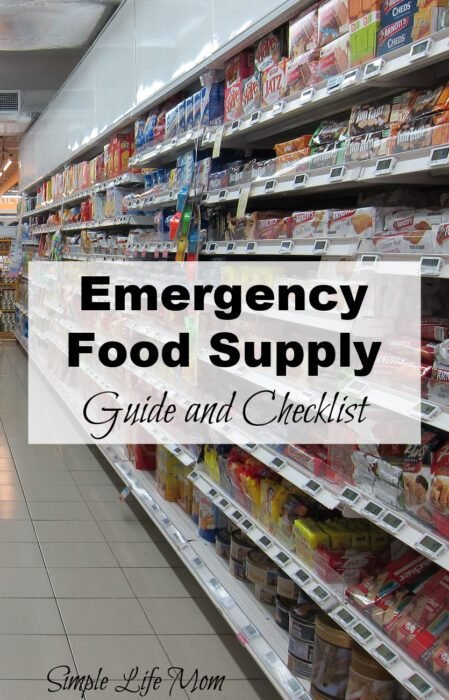
Buy What You Will Eat!
I will say this over and over again. Buy what you will eat.
If you never eat sauerkraut, don’t buy sauerkraut (though you can make your own and it’s delicious).
On the other hand, if you used to make bread and you all eat a lot of bread, but you just haven’t made any recently because you buy it pre-made due of time – buy flour and other bread making ingredients! It’s something that you can make and you all will eat.
Keep in mind how much you eat of certain foods. If you hardly every use sugar, don’t spend your money on 25 pounds of sugar. What do you go through the most? Those are your focus food items that you need to make sure are on hand.
Food Supply Checklist Printable
I wanted to be able to give you an idea of foods to buy to get you started, as well as provide a printable page so that you can print the list and make notations to tailor it to you and your family’s needs.
Divide Food Supplies into categories. You can get a free printable from me with details in each category. Click Here.
If you already get my emails, then just go to the downloads page link in each email and you’ll see it on the Downloads Page. Otherwise, you can sign up for the printable and get my other downloads here. You’ll get a welcome email with a link to the Download’s page.
Here’s a sample of what’s on the list, but each one of these will have specifics (what type of canned goods, etc):
- Pantry
- Canned Goods
- Baking Needs
- Rice
- Beans
- Barley
- Broths
- Dinner Sauces and other Additions
- Oils
- Herbs and Spices
- Parmesan
- Rasins
- Sweets
- Drinks
- Breakfast Dried Foods
- Lunch Dried/canned Ingredients
- Refrigerator Replacements
- Snacks
- Freezer
- vegetables
- Beef and Pork
- Fish and Shrimp
- poultry
- tortillas
- butter
- cheese
- nuts
How Much to Buy
I don’t buy a certain amount of foods per person (Except for water. See below.). I buy a lot of everything on my list and restock when necessary. I do it this way because I don’t use the same amount of food per person at the same rate. It changes often based on who is at home for dinner and what I choose to cook. Because of this, when I get some food out of the cupboard and see that I’m starting to get a little low on a few things, I will make note of everything I should top off and make that purchase in the next few days. These new items go in the back of the cupboard so that I use the oldest items first.
You know what you go through the most. If you eat rice every other day, then buy a lot of rice. You can buy food grade buckets with lids at local hardware stores (or here) and fill those buckets with rice, flours, or beans (if you eat a lot of beans).
Don’t Forget Water
We have a natural water source at our home, so this is not an area we worry about very much. Having enough water is more important than having food. Emergency Preparedness Part 3 will talk about securing enough water for your home in many different ways. There is a lot of basic knowledge needed, but a lot of practical things easily remembered.
For example, 1 gallon of water on hand is suggested per person per day. This is just drinking water. Don’t forget water for cooking and washing, or very important for those in short term emergencies, flushing toilets.
So, though we have water sources available outside our home, we also keep 3 gallons of water per person stored in our home. I also have old milk jugs that have been washed and filled with water that I keep to pour into toilets for flushing.
When we lived in a suburb we had our water shut off more than once. The first time this happened, my 85 year old neighbor asked us what we had on hand. I told him we had bottled water so we were ok, but he still sent his son over with gallons of water in milk jugs for the toilets. I was so grateful. It’s learning moments like that they point out how reliant we are on everything working like clockwork.
Head over to Part 3 to learn more about securing water for Emergencies, Purification, and Storage.
Emergency Preparedness Series:


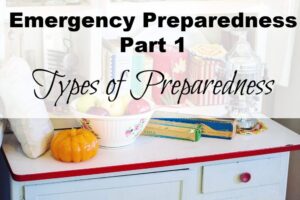
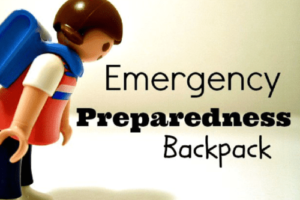

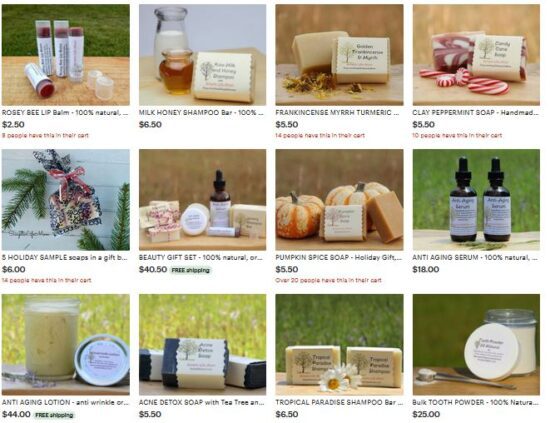
5 Comments
Leave your reply.